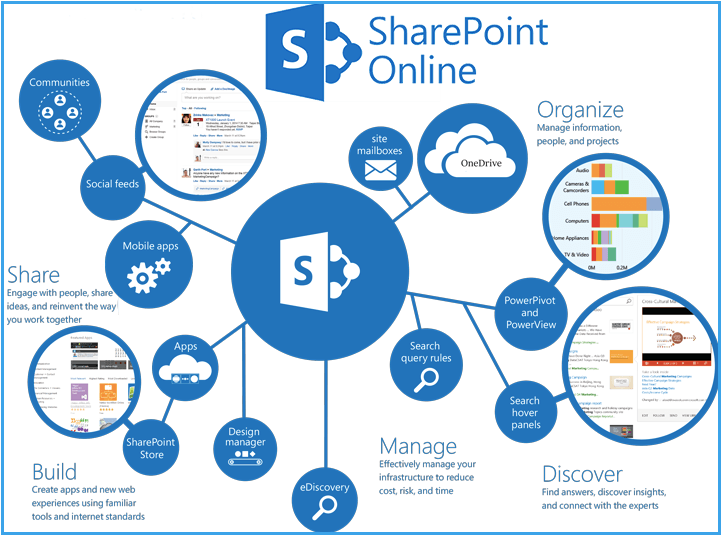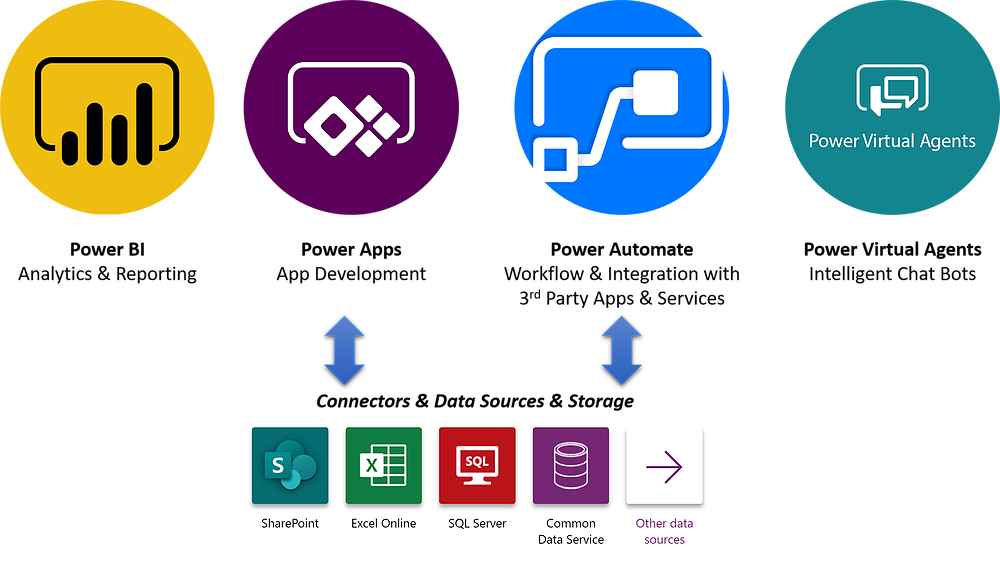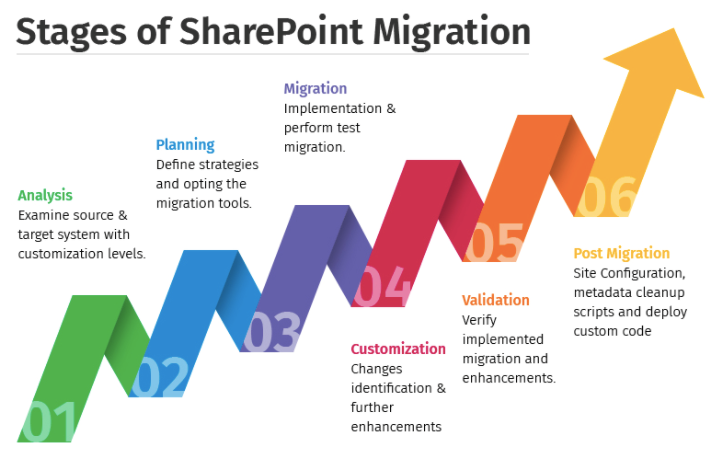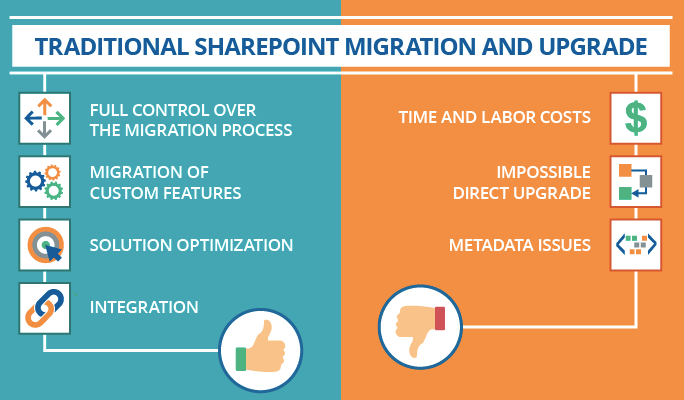Tag: SharePoint Online Benefits
SharePoint is a collaboration platform, where we can build tools that can be used for the organization. We can store content in this environment. SharePoint environment helps in hosting office documentation, web content, work processes, and searching. All these are integrated, available, and accessible through any browser.
Collaborating, connecting, and organizing content on the intranet is what SharePoint Hub sites are. With the help of these Hub Sites, site associations can be changed easily so that the structure of the internet can reflect the structure of the organization. Hub’s roll-up content like news, events, etc., from across the Hub, push down a level of consistency in theming, navigations, permissions, and they can help enforce business processes across the Hub.
How are Hub Sites Centralized?
A Hub Site is a central site in SharePoint that helps navigate and manage all the sites connected to it easily. This Hub Site can be either a Team Site or a Communication Site that is created or registered as a Hub Site. It serves as the umbrella connecting everything to it.
Hub Sites can be used in different businesses like:
Small Businesses – Hub Sites are used to organize and link to different department sites.
Large Businesses – Hub Sites are in multiples that are linked to the main intranet page connecting different departments.
Project Management – Single department Hub Site is created where individual sites are tied to the main Hub.
Features of Hub Sites
Common Navigation – The navigation bar is shared across all the sites in the Hub Site.
News Roll-up – The news from all the connected sites can be collected and rolled up to the News Web Part.
Search – The search bar allows to search among all the sites connected to the Hub Site.
Common Theme – The same theme is shared across all the sites that are connected to the Hub Site.
Content roll-up – The highlighted content Web Part can display content from all the connected sites.
Benefits of a Centralized Hub
1.Having SharePoint Online as a centralized hub helps to access any information in seconds thereby improving productivity.
2.Fetching any information through the portal is enabled with a cognitive search engine that navigates swiftly accessing the documents.
3.Centralized data helps any new hires to understand the organization better as they are accessible to all the articles and documents.
4.Having a Centralized Hub enables user engagement with all the available data and helps users get connected, making them happy, and be more productive.
5.Centralized Hub creates a digital experience for the end-users by integrating all the emails, the status of the IT tickets, leave updates, business news, etc., in one place.
6.The Centralized Hub helps activities, information, and dashboards accessible to users connected from any location. This brings unity in teams and helps them stay connected with all the updates regardless of their location.
7.It helps in improving company branding automatically by tying one organization’s site to another Hub Site.
8.This globally recognized solution enables the best employee experience improving productivity by staying updated and connected irrespective of their location.
Inovar helps develop your Centralized Hub
Inovar delivers featured digital solutions made possible with the best consulting evangelists who identify and integrate all the software initiatives using emerging technologies. By identifying your business needs and addressing all the present-day challenges we at Inovar integrate SharePoint Online into your organization. For more details and a free consultation check out our SharePoint projects here.
Modern business users want tools that make them productive and engaged. Office365 is considered to be one such tool which is constantly evolving and moving towards Microsoft’s vision of the one-stop online-productivity hub. Microsoft SharePoint in Office 365 has now practically shaped the way organizations collaborate within their establishments. More than 75%* of Fortune 500 companies and over 100 million people across the globe now use SharePoint.
Earlier SharePoint was launched as an application for document management. But slowly, it evolved into document management and records management alongside web content and portals, thus turning into a robust collaboration and content management platform. With just a web browser, organizations could store, organize and share information accessible from any device.
Unlike the on-premises version, SharePoint Online is a Microsoft managed cloud solution that can be used for creating intranet and websites for public use. The biggest question that arises is why should businesses migrate to SharePoint Online? Not everyone is comfortable with this migration from SharePoint On-Premises to SharePoint Online, but the long-term rewards are endless.

A few reasons why businesses should migrate to SharePoint Online are:
99.9% Guaranteed Uptime
This frees up the user to focus on the company’s performance instead of worrying about whether the services are reliable or not. With an outstanding support team, SharePoint online remains available around the clock for 365 days in a year.
Zero Server Footprint
SharePoint On-Premise required in-house teams for maintenance and technical support whereas all technical assistance for back-end processes in SharePoint Online is handled by the Microsoft Team. This means that all underlying hardware and platform problems, as well as, server upgrades and patches are covered by Microsoft. This is a major advantage as it becomes cost effective.
Enterprise Security Solutions
As SharePoint Online is managed by Microsoft, all users get enterprise-level security features to protect their confidential and sensitive data critical to their business. The data is stored in Microsoft’s data centers distributed around the globe and has 5 layers of Security, Proactive Monitoring and Operations Access Restriction, thus making it highly secure from the outside world.
External User Access Management
Managing security issues while allowing users to access SharePoint On-Premises is one of the major challenges in the legacy system. SharePoint Online simplified this process and made file sharing using Services Management Portal easier for collaboration.
Hybrid Environment
Businesses can continue to use their On-premises server while transitioning to the cloud to take advantage of SharePoint Online. This solution is perfect for businesses that are worried about compliance challenges such as data breaches if they move to the cloud model. While the most confidential business data can still be kept within the organization, others can be moved to the cloud for greater scalability.
Power Platform Ecosystem
Power platform is tightly integrated with SharePoint and provides you with the capability to create apps, automate business processes and visualize data. As Power Platform is a low code no code environment, getting started is easy but it doesnot limit you from building a full-scale mission critical solution.

Evergreen Service
The latest features, patches, and security updates are available to all SharePoint Online users as soon as Microsoft makes them available. Whereas, these features are available on SharePoint On-Premise only in the next major release, so they remain stuck with the point release model. Since new features are automatically pushed to SharePoint Online, its users get to enjoy the upgrades much earlier.

Enterprises invest a lot of money in SharePoint and concern themselves about reaping the benefits of their investment.
Based on a survey by 274 AIIM, 40%* SharePoint implementations are not successful.
A few challenges that organizations face when implementing SharePoint Online are:
User Adoption
User Adoption is a serious issue that many admins of SharePoint face in their organization. After deploying SharePoint, many enterprises replace file servers with document libraries, so that the indexing power of SharePoint helps in locating the documents quicker. But overloading document libraries makes the task tougher for the user to find the required information within the library.
User Interface
Intranets of SharePoint are inept with static pages and interactive tools. Some admins of SharePoint spent a lot of time and energy on customizing the intranet that can match the organization’s brand and provide a better user experience (UX).
Bulk Migration
It is quite possible that files may not end up in the correct location or can get corrupted during the migration. There is no general rule to take care of this but having similar file types maintained in specific folders helps. Also, there are third-party tools available in the market that are intelligent enough to identify and migrate content based on its type.
Loss of Metadata
While migrating, all or some metadata that was defined previously might get lost. To overcome this scenario, one must clearly define an inventory of the content, before starting the migration journey, and organize it well with the content types.

After analyzing all the benefits and challenges, another question that arises is what can one do to ensure a smooth migration? Users must spend time to analyze the content, their owners, the structure, and their importance. This shortens the overall migration timeline. Not only does this remove redundant and obsolete data but also helps prepare a governance plan.
SharePoint has transformed from a simple on-premises application into a comprehensive solution for collaboration, management of records and documents, and a system for managing portals and web content. It has helped countless businesses increase their productivity. The newer versions such as SharePoint Online cannot even be compared with the legacy versions that are incompatible with modern business requirements. Needless to say, migration from SharePoint On-Premise to SharePoint Online has become a necessity for modern features.
References:
*Top 5 rollout challenges faced by enterprises, April’20. Revived from: https://www.apty.io/blog/top-5-sharepoint-rollout-challenges-faced-by-enterprise